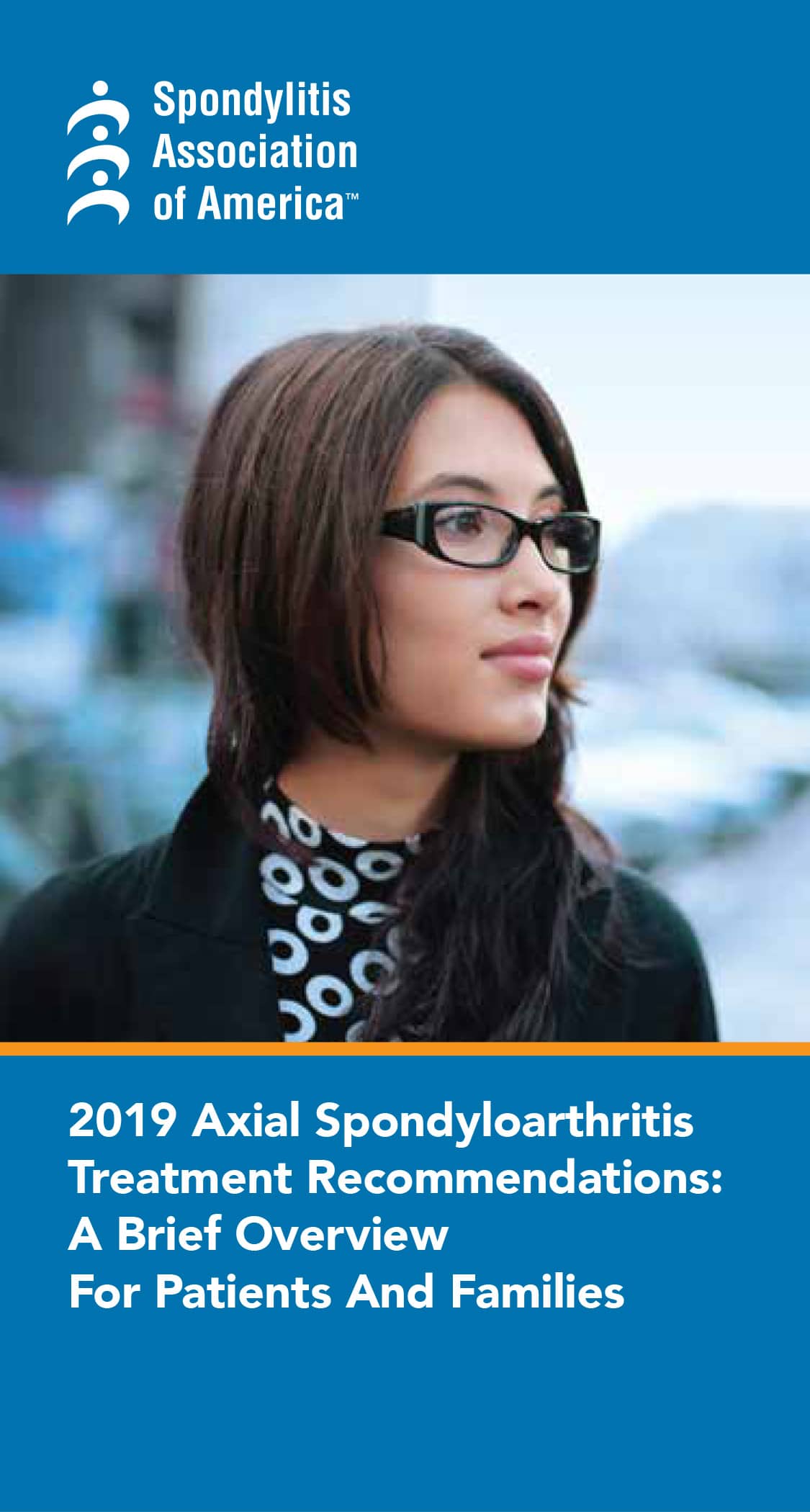A common treatment regimen for the various forms of spondyloarthritis (ankylosing spondylitis, psoriatic arthritis, enteropathic arthritis, reactive arthritis, juvenile spondyloarthritis, and undifferentiated spondyloarthritis) involves medication, exercise, physical therapy, good posture practices, and other options such as applying heat/cold to help relax muscles and reduce joint pain. In severe cases, posture correcting surgery may also be an option.
Depending on the type of spondyloarthritis, there may be some variation in treatment. For example, in psoriatic arthritis, both the skin component and joint component must be treated. In enteropathic arthritis (spondylitis/arthritis associated with inflammatory bowel disease), medications may need to be adjusted so the gastrointestinal component of the disease is also treated and not exacerbated.
In 2015, the American College of Rheumatology, along with SAA and the Spondyloarthritis Research and Treatment Network, had published the first U.S. recommendations for the treatment of adults with axial spondyloarthritis (which encompasses ankylosing spondylitis and non-radiographic axial spondyloarthritis.) In August of 2019, physicians, scientists, patients, and other experts from the SpA community came together again to update these recommendations. Each recommendation is based on all available scientific evidence, and the expertise and experiences of rheumatologists and people with axial SpA. But you are unique, and there is no replacement for working with your doctor to design the best plan for you.
SAA was proud to play a critical role in their development, and is now proud to present key updates from the updated document for patients and loved ones, in clear and simple terms. This concise and informative overview was developed in close partnership with patients and physicians, and we hope you find it helpful.

